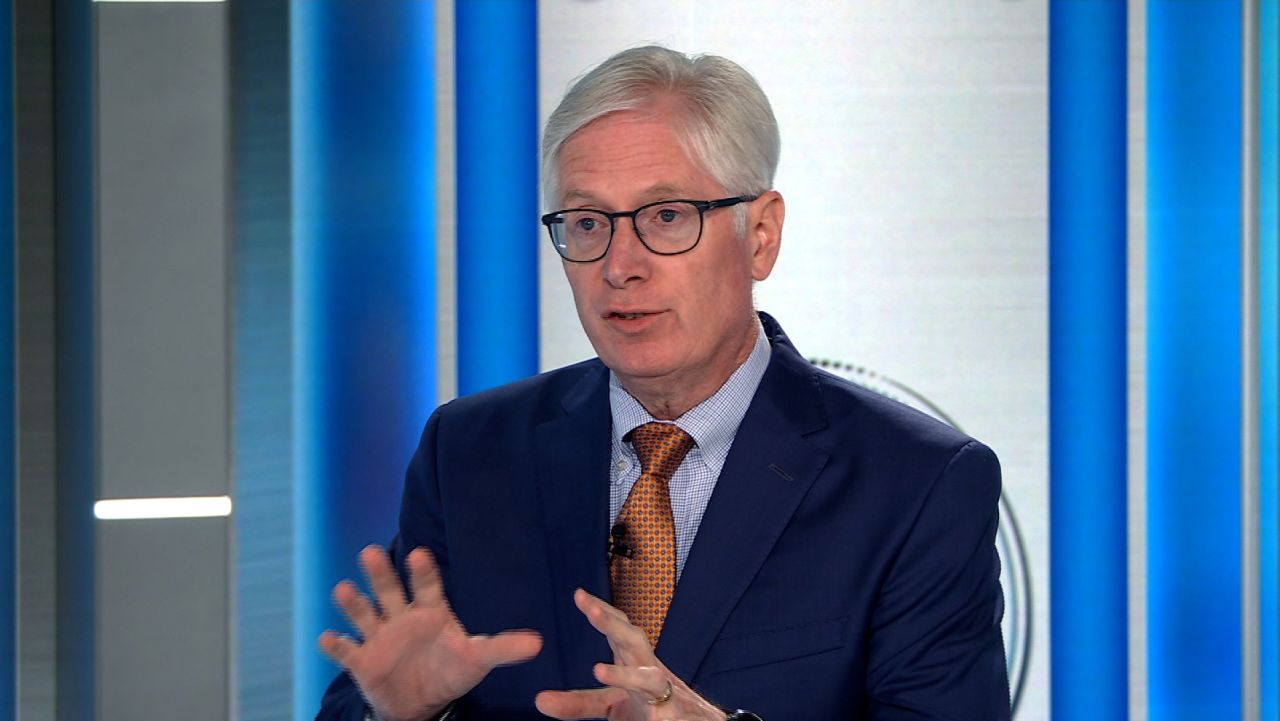Americans’ credit card debt levels have just notched a new, but undesirable, milestone: For the first time ever, they’ve surpassed $1 trillion, according to data released Tuesday by the Federal Reserve Bank of New York.
During the second quarter, credit card balances shot up by $45 billion, or nearly 4.6%, to land at $1.03 trillion, according to the New York Fed’s latest Quarterly Report on Household Debt and Credit.
Rising credit card debt and auto loan balances helped to drive overall household debt levels up 1%, to $17.06 trillion for the quarter, the report showed. Overall household debt has spiked by $2.9 trillion since the end of 2019, before the pandemic. The New York Fed’s debt balances are nominal and not adjusted for inflation.
These increases are coming at a time when interest rates have quickly vaulted to a 22-year high.
“As interest rates feed through from the federal funds rate to interest rates on mortgages and credit cards, that affects everyday consumers,” Sofia Baig, an economist at decision intelligence company Morning Consult, told CNN. “So with elevated interest rates, paying that debt becomes more expensive, and with consumers continuing to take on more debt, this combination will put more pressure on some households who have those tighter budgets.”
The average credit card charges a near-record 20.53% interest rate, according to Bankrate.
Credit card balances have risen for five consecutive quarters, increasing at some of the largest rates in 20 years, an analysis of New York Fed data shows.
“Unfortunately, it’s only going to go up from here,” Matt Schulz, chief credit analyst for LendingTree, said in an interview with CNN “What’s driving it is inflation, higher interest rates and just generally how expensive life is in 2023.”
‘Only so much’ people can take
Although the labor market is strong, the economy is growing, and consumer spending is increasing, persistently high inflation coupled with spiking interest rates have weighed down consumers — especially those who were not among the 14 million homeowners who refinanced during the pandemic, locking in ultra-low interest rates and extracting $430 billion in the process.
Earlier Tuesday, Bank of America reported that more people were tapping their 401(k) accounts because of financial distress. The number of people who made a hardship withdrawal during the second quarter surged from the first three months of the year to 15,950, an increase of 36% from the second quarter of 2022.

While hardship withdrawals are being made by a tiny fraction of overall plan holders, it’s another indication that cracks may be forming in households’ financial situations.
“There’s plenty of data that shows people are doing really well, their debt compared to their expendable income is OK, delinquencies are low and unemployment is low,” Schulz said. “But there’s also only so much hard debt that people can handle before delinquencies really spike.”
New delinquencies continue to climb from recent historic lows, according to the latest New York Fed report.
The transition rates into early delinquency for credit cards, auto loans and home mortgages increased for the quarter, according to New York Fed data smoothed as a four-quarter moving average. While new mortgage delinquency rates remain below what was seen pre-pandemic, the moving averages for auto and credit card delinquencies are the highest since the first quarter of 2018 and the first quarter of 2012, respectively.
Although those have picked up, they’ve not yet risen to a point where consumers are experiencing widespread financial distress, New York Fed researchers wrote in a blog post.
“American consumers have so far withstood the economic difficulties of the pandemic and post-pandemic periods with resilience,” the researchers wrote. “However, rising balances may present challenges for some borrowers, and the resumption of student loan payments this fall may add additional financial strain for many student loan borrowers.”
Pulling back on spending
Federal student loan payments are set to resume in October following a more than three-year pause due to the Covid-19 pandemic and the Biden Administration’s push to forgive debt.
The Biden Administration’s recent roll-out of repayment programs should help to soften the blow for borrowers, New York Fed researchers told reporters on Tuesday.
Still, not all finances are created equally, and it may be harder for some households to add back in the monthly payment.
“That’s going to be a really big test for an awful lot of Americans,” Schulz said. “People’s budgets are really, really tight. Once those start up, we just don’t know what that’s going to look like.”
When debt piles up, it’ll inevitably force people to rein in their spending even more, Morning Consult’s Baig said.
Consumers already have curtailed spending or dipped into savings to cover expenses that are outside of their budgets, she said.
“I can see this behavior bleeding over into something like student loan repayments or credit card debt repayments,” she said. “If push comes to shove and you need to start repaying your student loan payments, I expect to see those consumers pull back on their spending in order to make it work.”
“What we’re going to see here is basically a change in behavior in order to survive,” she said.








